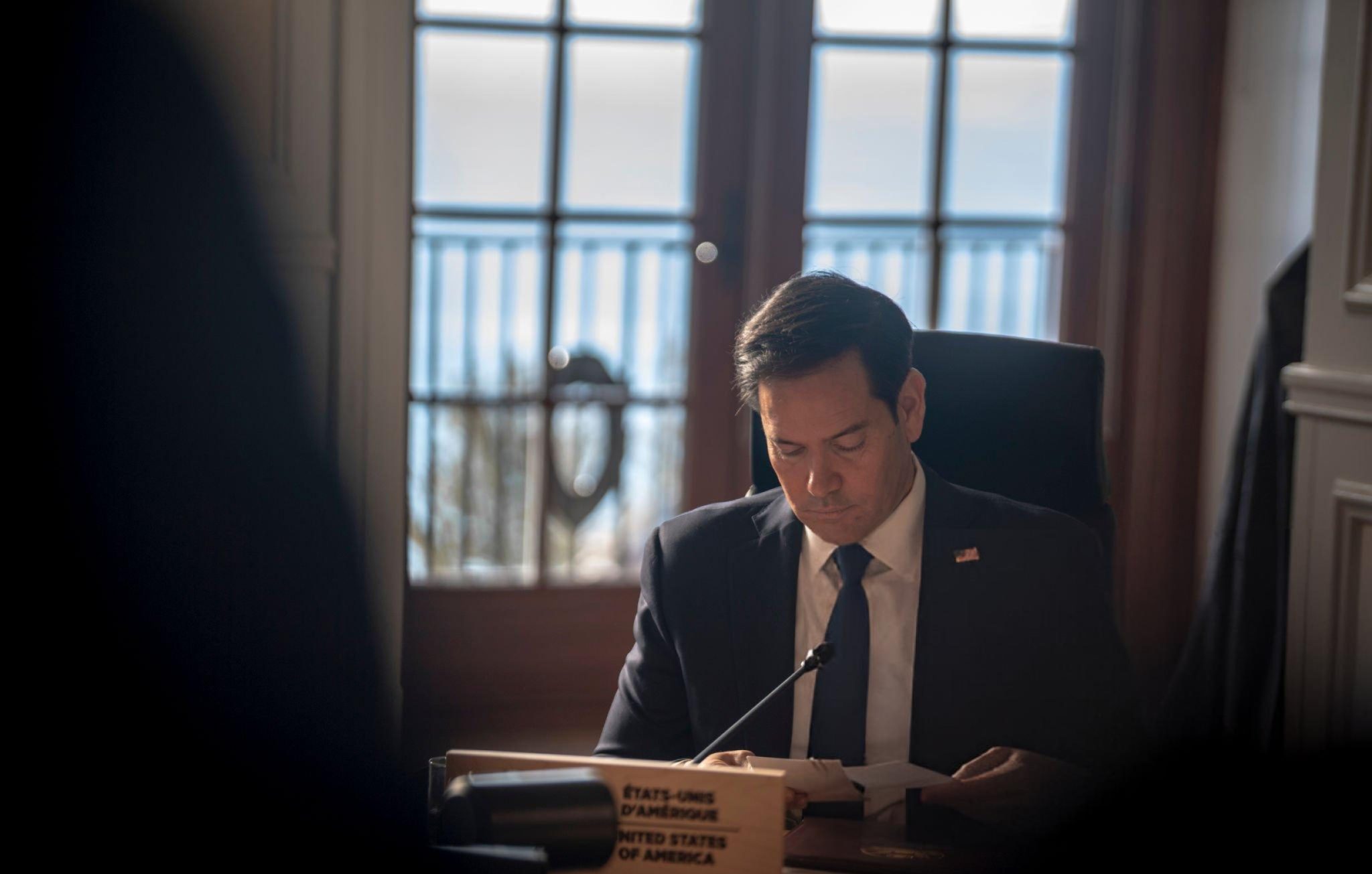US Secretary of State 7 will arrive in Brussels this week for high-stakes meetings with NATO counterparts and European officials. His visit comes amid mounting concerns about the Trump administration’s evolving stance on NATO, its increasing hostility towards traditional allies, and its apparent efforts to rekindle relations with Russia.
As President Donald Trump pushes for a closer relationship with Russian President Vladimir Putin, European allies remain alarmed. The administration’s rhetoric regarding NATO has been inconsistent, raising fears that Washington may seek to diminish its role in the alliance or even alter its long-standing commitments.
Recent statements from the White House, including insults directed at NATO members such as Canada and Denmark, have added to the anxiety. Meanwhile, new US tariffs on European goods have further strained transatlantic relations, leaving European leaders wary of what lies ahead.
Can Rubio reassure NATO allies?
Rubio’s visit follows his recent participation in a G7 meeting, where he attempted to foster diplomatic unity despite Trump’s unpredictable foreign policy. Some European diplomats see Rubio as a more pragmatic figure within the administration, one who may attempt to calm tensions and reassure allies of America’s continued commitment to NATO.
However, he faces a difficult challenge, especially after Trump’s controversial claim this week that Ukraine was never going to join NATO—despite a formal declaration by NATO leaders last year that Ukraine was on an “irreversible path” towards membership.
Adding to European unease, the US president has repeatedly questioned the value of NATO, criticised members for not meeting defence spending targets, and even suggested that some European countries are “bad allies.” Trump’s recent remarks about Canada and Denmark, where he hinted at annexing Greenland and suggested that Canada should become America’s 51st state, have only intensified concerns.
Ian Kelly, a former US ambassador to Georgia, noted that many European leaders are deeply anxious about Trump’s upcoming NATO summit in June. “Rubio will have a tough time convincing them that the US remains a dependable partner,” he said.
Europe prepares for a changing NATO
For the past 75 years, NATO has relied on US leadership to maintain stability and security in Europe. However, since Trump took office, European leaders have feared a potential shift in American policy. The administration’s reluctance to reaffirm Article 5—the cornerstone of NATO’s collective defence agreement—has raised questions about Washington’s commitment to its allies.
Meanwhile, Defence Secretary Pete Hegseth’s recent statement that US strategic priorities are shifting away from Europe towards Asia and domestic security has added further uncertainty. European governments are now exploring ways to take on more responsibility for their own defence, including a potential expansion of NATO’s military budget.
With approximately 100,000 US troops currently stationed across Europe, NATO allies are particularly concerned about potential troop withdrawals. Reports suggest that the Biden administration’s decision to send an additional 20,000 troops following Russia’s full-scale invasion of Ukraine may be reversed under Trump.
European leaders will press Rubio for clarity on US military plans and whether the Trump administration intends to reduce its footprint in Europe. Any significant withdrawal of US forces could create security gaps, which European forces would struggle to fill on their own.
The Russia question
Another critical issue is how the Trump administration views Russia’s role in global security. While NATO leaders reaffirmed last year that Russia remains the greatest threat to European security, Trump’s openness to closer ties with Putin has unsettled many allies.
“If Russia is no longer considered a threat by the US, why should European countries spend more on defence?” one senior NATO diplomat questioned.
Despite these concerns, European nations are preparing to increase their defence budgets. NATO leaders are expected to raise the alliance’s spending target from 2% to over 3% of GDP in response to growing security challenges.
Rubio’s diplomatic tightrope
Rubio’s visit will test his ability to bridge the growing divide between Washington and its European allies. While Trump has pushed for a realignment with Russia, he has simultaneously called on NATO members to double their defence spending. This contradictory approach has left many European officials confused and uncertain about the US administration’s true intentions.
Jeff Rathke, president of the American-German Institute at Johns Hopkins University, described Rubio’s position as “incredibly difficult.”
“Trump is trying to convince NATO allies that Russia is not a threat while also demanding they spend more on defence because of Russian aggression,” he said.
As the June NATO summit approaches, European leaders will be watching closely to see whether Rubio can provide any meaningful reassurances—or if Trump’s unpredictable foreign policy will continue to destabilise the alliance.







